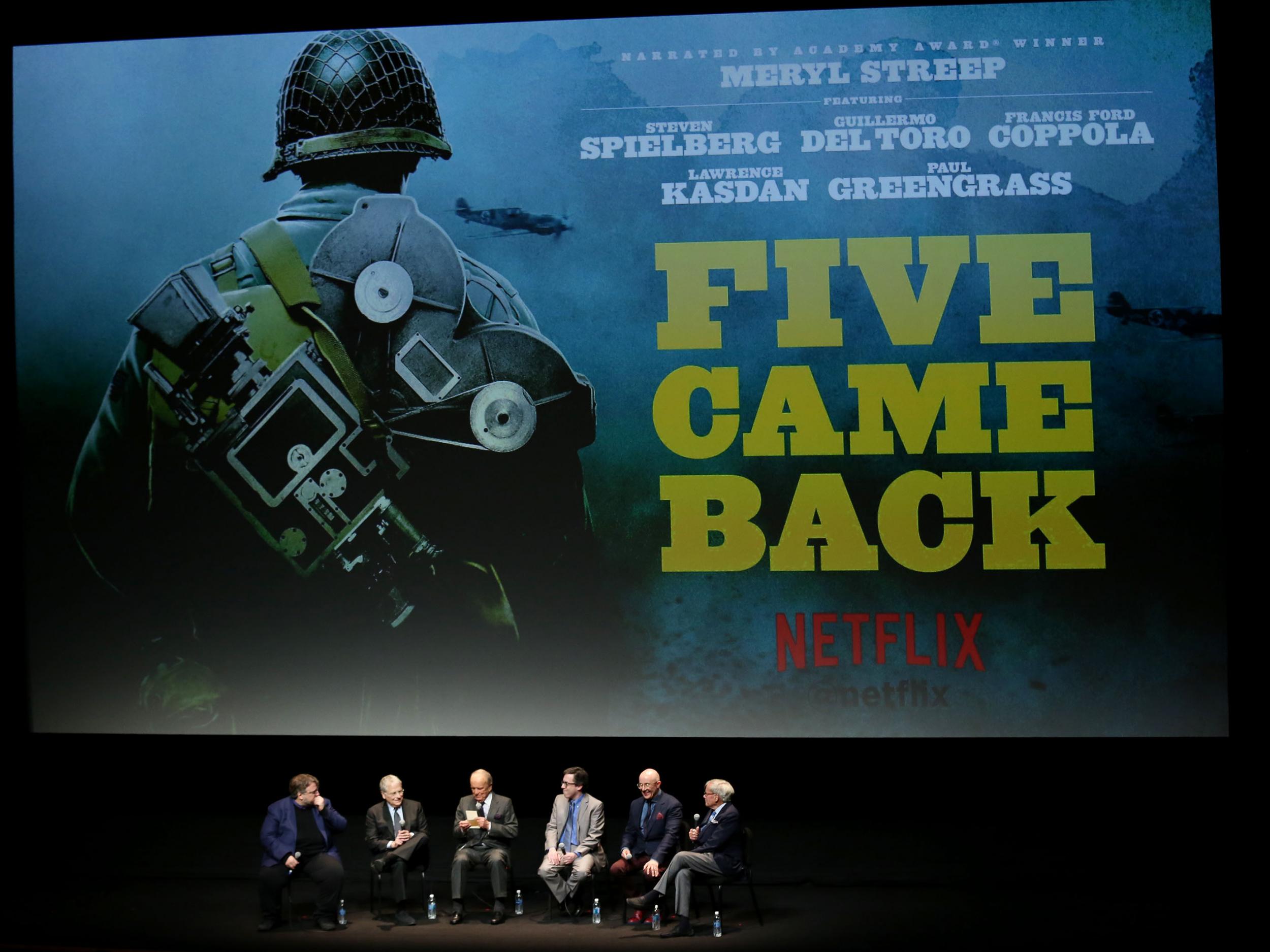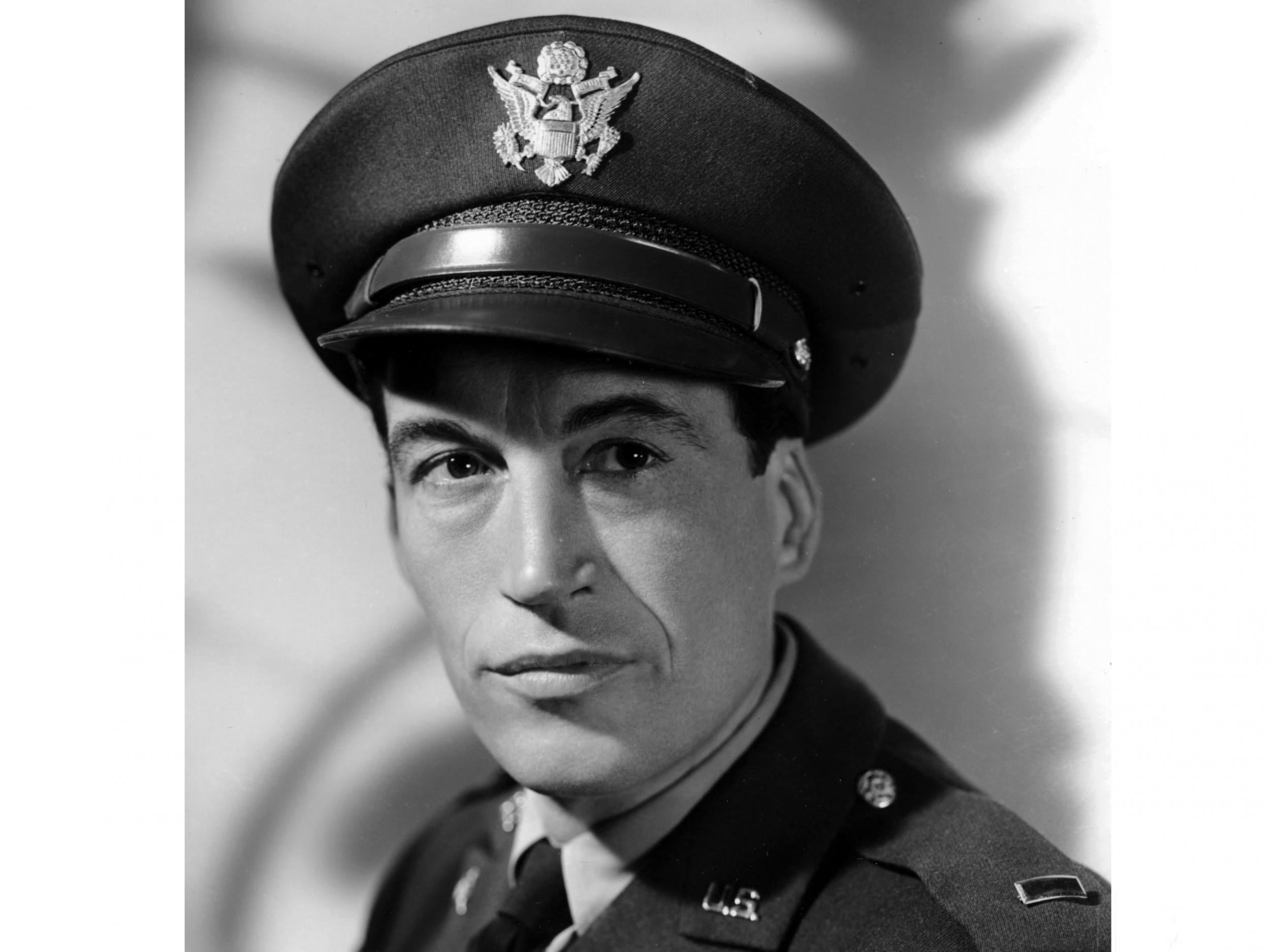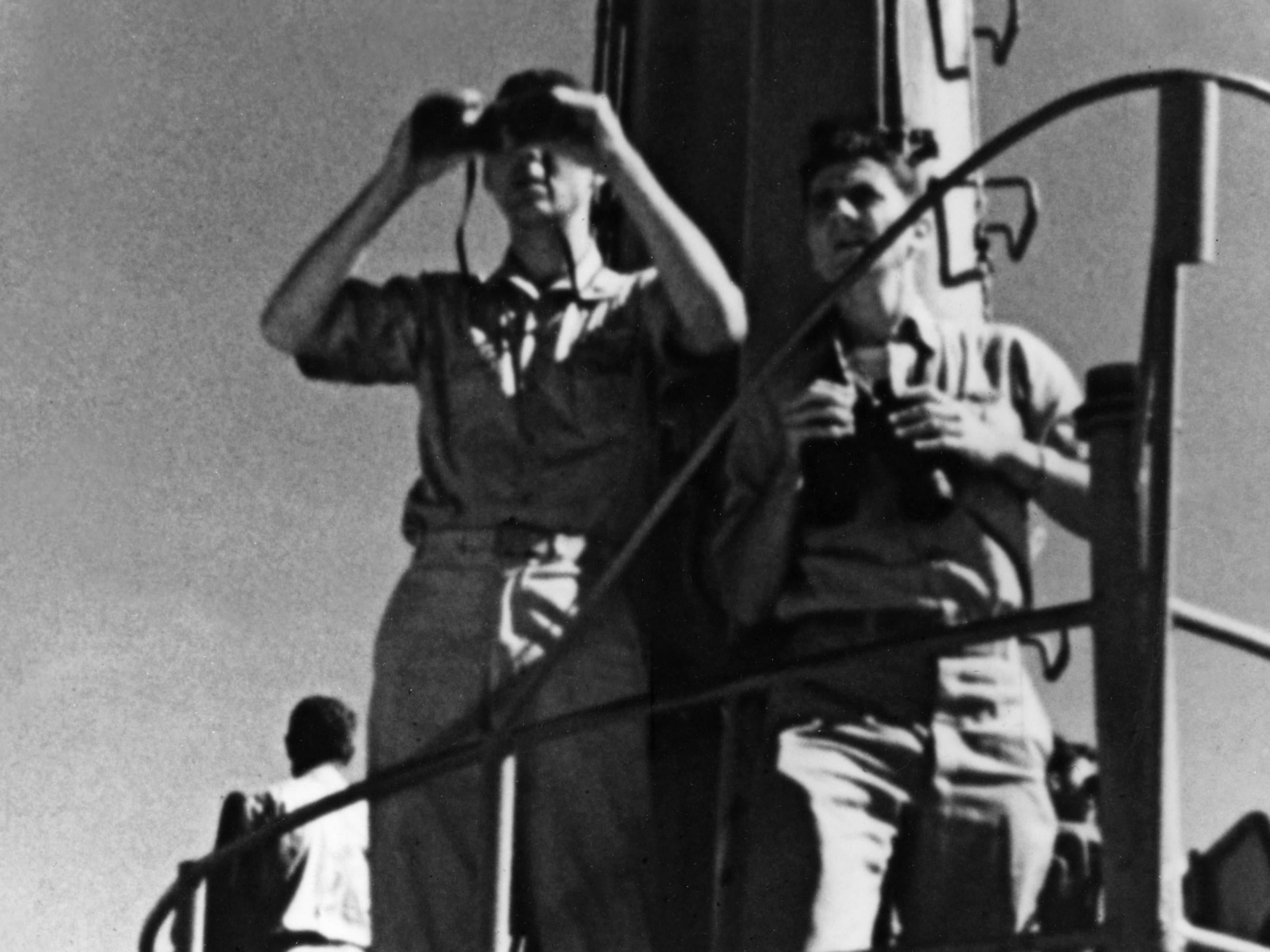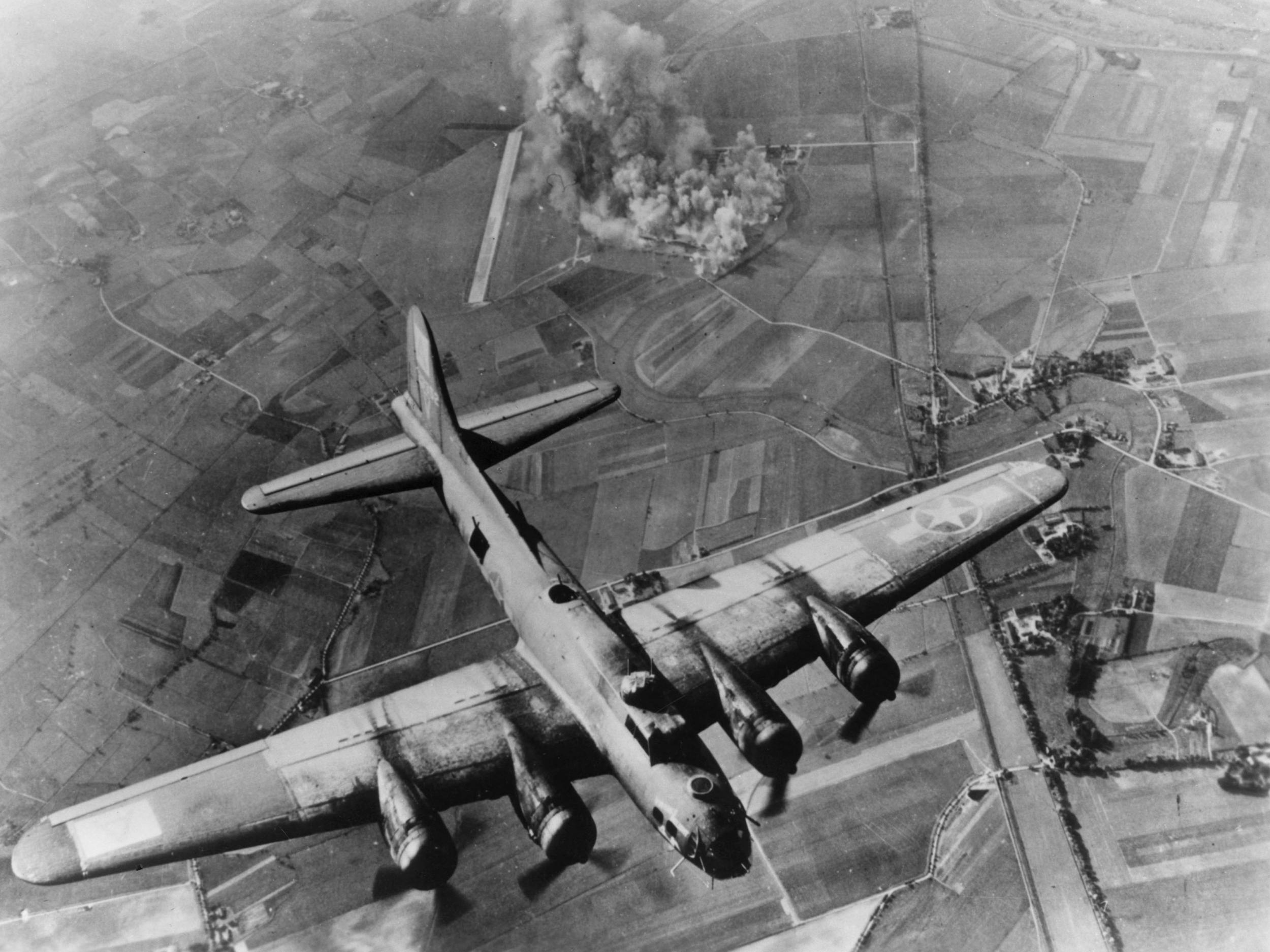Five Came Back: How Hollywood's finest shot the Second World War
Netflix’s ambitious new documentary series recounts WWII experiences of directors John Ford, John Huston, George Stevens, William Wyler and Frank Capra

Your support helps us to tell the story
From reproductive rights to climate change to Big Tech, The Independent is on the ground when the story is developing. Whether it's investigating the financials of Elon Musk's pro-Trump PAC or producing our latest documentary, 'The A Word', which shines a light on the American women fighting for reproductive rights, we know how important it is to parse out the facts from the messaging.
At such a critical moment in US history, we need reporters on the ground. Your donation allows us to keep sending journalists to speak to both sides of the story.
The Independent is trusted by Americans across the entire political spectrum. And unlike many other quality news outlets, we choose not to lock Americans out of our reporting and analysis with paywalls. We believe quality journalism should be available to everyone, paid for by those who can afford it.
Your support makes all the difference.Netflix continues to go from strength to strength in its quest for total domination of the streaming market, its roster of Netflix Original productions growing ever more impressive thanks to a canny acquisition strategy.
Documentaries and serialised adaptations of pre-existing cultural properties are two areas in which the VOD site has particularly excelled in recent years and the company has now combined the two approaches to offer one of its most dazzlingly realised programmes to date: Five Came Back.
Based on journalist Mark Harris’s 2014 book of the same name, this three-part series recounts the experiences of five Hollywood directors during the Second World War, commissioned by the US Army to shoot newsreel footage straight from the frontline in the wake of Pearl Harbour.
John Ford, John Huston (below), George Stevens and William Wyler – martialled by Frank Capra back in Los Angeles – were dispatched to cover the conflict across the globe, stationed as far away as the Pacific’s remote Midway Island to the heart of Paris and Rome as those great European capitals were liberated from German occupation.

The films they sent back were screened for new recruits and projected in cinemas across the US to ensure both the troops and the American public were kept up to speed with the latest news from the battle overseas and left in no doubt about the importance of the cause and under no illusions about the horrifying realities Allied soldiers were facing away from home.
More at ease on studio lots with two-dimensional sets and busy costume departments at their disposal, these seasoned filmmakers had little choice but to abandon artifice and shoot what they saw, keenly aware of the duty they owed to the enlisted men and women around them to capture the truth of their experiences faithfully.
Their efforts represented a vital propaganda tool but came at no little personal cost: Wyler was permanently deafened during the shooting of Thunderbolt in Corsica in 1945 by loud engine noise from the P-47 bomber he flew in; Ford took a shrapnel blast to the arm at Sand Island and was driven to drink by the carnage and drownings he witnessed at D-Day; Stevens was deeply traumatised by the concentration camps and never again directed a comedy feature.

All five came back with a renewed sense of purpose and commitment to their craft. Each in turn went on to produce his most enduring and insightful work: It’s A Wonderful Life, The Best Years of Our Lives (both 1946), The Treasure of the Sierra Madre (1948), The Searchers (1956) and The Diary of Anne Frank (1959) all arrived in the aftermath of the war.
Directed by Laurent Bouzereau with narration from Meryl Streep, Five Came Back invites five of today’s biggest Hollywood filmmakers – Steven Spielberg, Francis Ford Coppola, Guillermo Del Toro, Paul Greengrass and Lawrence Kasdan – to stand in for its subjects and tell their stories direct to camera. The expertise, passion and authority these men bring to the undertaking, along with the wealth of frequently awe-inspiring footage available (some of it in Technicolor), ensure the series is as informative as it is thrilling.
It’s not perfect, however. Many interesting aspects of Hollywood’s role in the US war effort are brushed over: from the active service undertaken by name actors like James Stewart, Clark Gable and Robert Montgomery to the tours many stars engaged in to sell war bonds and entertain the men. Orson Welles and Marlene Dietrich had a famous magic act, for instance, which you can at least see a version of in the 1944 comedy Follow the Boys.
Five Came Back also glosses over complicating factors like Capra’s stated admiration for Benito Mussolini and Ford’s anti-Semitism and neglects to mention other directors who made an important contribution: notably Billy Wilder, an Austrian Jew who, like Stevens, steeled himself to boldly address the plain facts of the Holocaust in Death Mills (1945).
Even more interesting than the series itself is Netflix’s inspired decision to make the finished work of these five filmmakers available on its site for those keen to know more. The 13 shorts featured include fascinating entries from Capra’s public information anthology series Why We Fight like Prelude to War (1942), The Battle of Russia (1943) and the inevitably jingoistic and racist Know Your Enemy – Japan (1945), all of which are vividly illustrated with contributions from Walt Disney animators. Ford’s Battle of Midway (1942) and Wyler’s extraordinary Memphis Belle (1944) are up there too, as is Huston’s ahead-of-its-time Let There Be Light (1946), a moving and sensitive portrait of returning servicemen being treated for post-traumatic stress disorder at an army hospital on Long Island.

Unquestionably the most startling of all is Stevens’ Nazi Concentration Camps (1945), an unflinching and utterly horrifying record of what the liberating forces encountered at Belsen, Buchenwald, Dachau, Ohrdruf and other German extermination facilities. The film will be too distressing for many viewers to sit through but Netflix does a public service by including it. Truly a disturbing experience - containing extended sequences in which piles of emaciated corpses are bulldozed into mass burial pits - we nevertheless owe it to ourselves to watch Stevens’ documentary to understand the full extent of the evil humanity is capable of and ensure such atrocities can never happen again.
Five Came Back and the inclusion of these accompanying shorts mark an impressive new direction for Netflix. Admired for hit shows like Orange is the New Black and Stranger Things, the company is nevertheless commonly criticised among film fans for the dearth of older or classic titles among its catalogue. Netflix UK currently offers nothing, not a single movie, featuring the great Humphrey Bogart but no fewer than 14 starring Adam Sandler. The Five Came Back project goes some way to addressing the failure of this most influential of programmers to engage with cinema’s rich heritage.
The decision to offer this important collection sees the streaming behemoth taking a more curatorial approach to its offerings. Netflix is at its best when it challenges its subscribers, rather than simply spinning out tried-and-tested binge fodder. Here we find it assuming a Reithian teaching brief and offering viewing of real educational value, of importance to both world and movie history. The site deserves applause for the ambition. Long may it continue.
Join our commenting forum
Join thought-provoking conversations, follow other Independent readers and see their replies
Comments